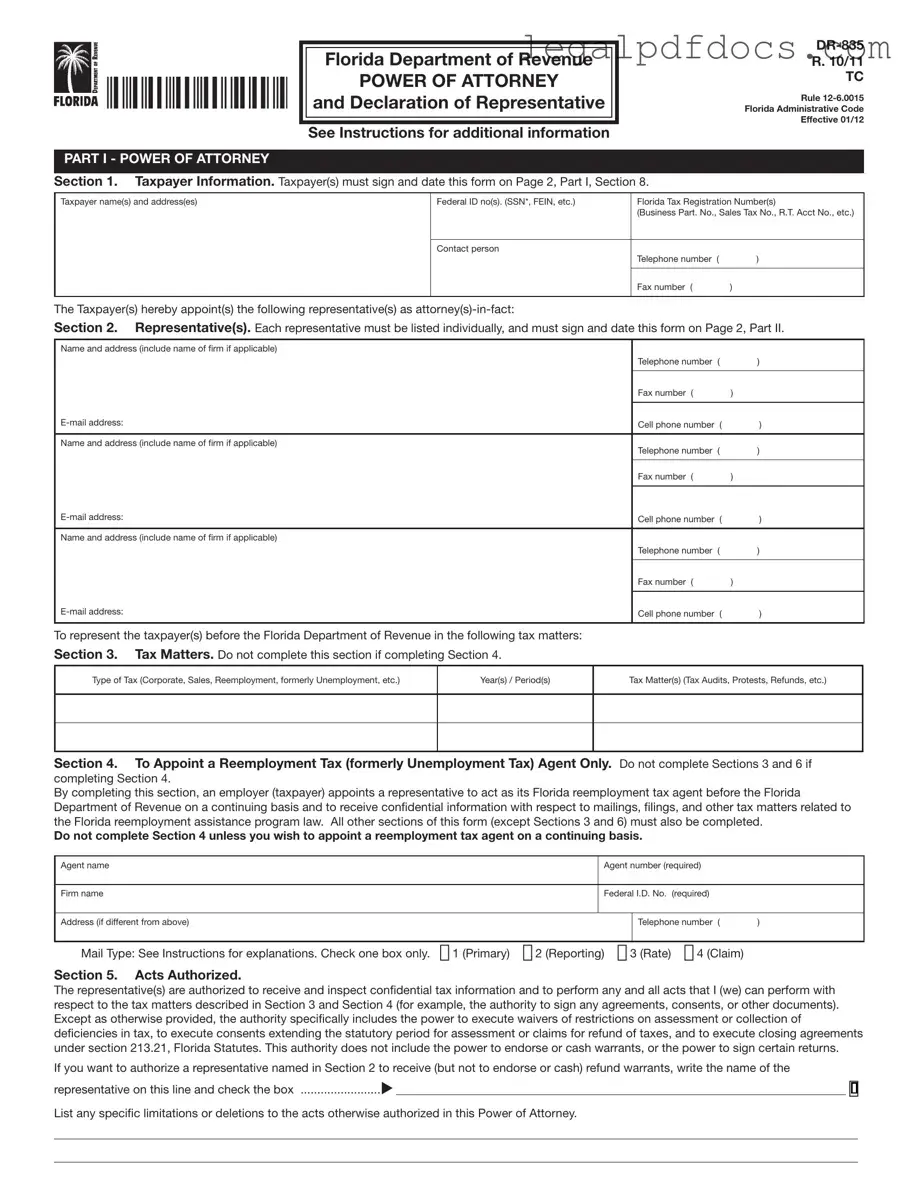Fill Out a Valid Tax POA dr 835 Template
The Tax POA DR 835 form is a document that allows individuals to designate someone else to represent them in tax matters before the Colorado Department of Revenue. This form is essential for ensuring that your tax affairs are managed by a trusted representative, providing them with the authority to act on your behalf. If you need to fill out this form, click the button below to get started.
Open Tax POA dr 835 Editor Here
